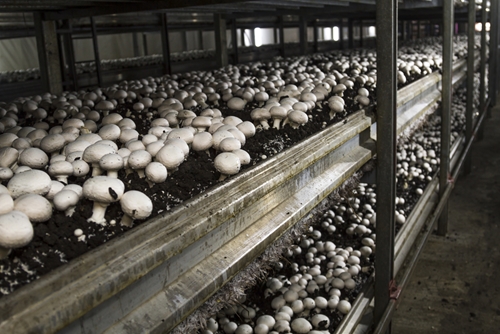What would the world be without mushroom pizza, mushroom risotto or stuffed mushrooms?
Unfortunately, we may find out soon enough. That’s right—the U.S. is currently in the midst of a historic mushroom shortage, and it’s going to affect the entire supply chain.
Ground zero
Believe it or not, the majority of mushrooms grown in the U.S. come out of one small town in Pennsylvania—Kennett Square. Dubbed the mushroom capital of the world by many, this small town of just over 6,000 people is accountable for 64 percent of the mushroom crop yield in the U.S, The Packer reported.
Due to warm temperatures and arid weather recently, farmers have had a difficult time producing high-quality compost. Specifically, the industry is having trouble getting the substrate to aerate, which in turn can produce a precipitous drop in yield or worse, entire allotments won’t grow.
Growing edible mushrooms is actually stringently regulated, and requires exceptional skill and knowledge. Many growers in Kennett Square are third-generation farmers, where years of experience have been passed down and utilized to produce larger-than-average crop yields year in and year out.
Without an adequate supply of quality compost, farmers are more or less hoping for the best when they plant their crops. After the three-week waiting period in which spores are supposed to show, they’re not seeing any results, which is turning the industry on its head.
 There just won’t be enough mushrooms to go around this year.
There just won’t be enough mushrooms to go around this year.Who will be affected?
The mushroom shortage couldn’t have come at a worse time, as Christmas and the Super Bowl—two out of the top three times of year when food is consumed the most— are right around the corner.
How will it affect the average consumer? Shoppers will see a number of the following scenarios take place:
- Higher mushroom prices.
- Poorer quality due to European mushrooms being shipped over.
- A complete lack of product across the board.
It’s at this time of the year when a high volume of casseroles made with mushrooms and mushroom pizzas are devoured, but that simply may not be the case this time around. The solution isn’t as simple as a price hike to help the growers recuperate losses—there’s just not going to be enough mushrooms to meet demand.
This will undoubtedly affect the leisure and hospitality industry the most, especially those that have mushroom-specific dishes. Fast-food chains serving up a hamburger with mushrooms may have to strike it from the menu, while dine-in restaurants could eventually revamp their offerings knowing the price margins wouldn’t be beneficial.
And in the end, growers will of course carry the financial burden of not being able to supply product during the time of year people want to eat it the most. But it’s not for lack of want—growers would like to get mushrooms out on the market, but the historic shortage won’t let that happen.
Share this Post

